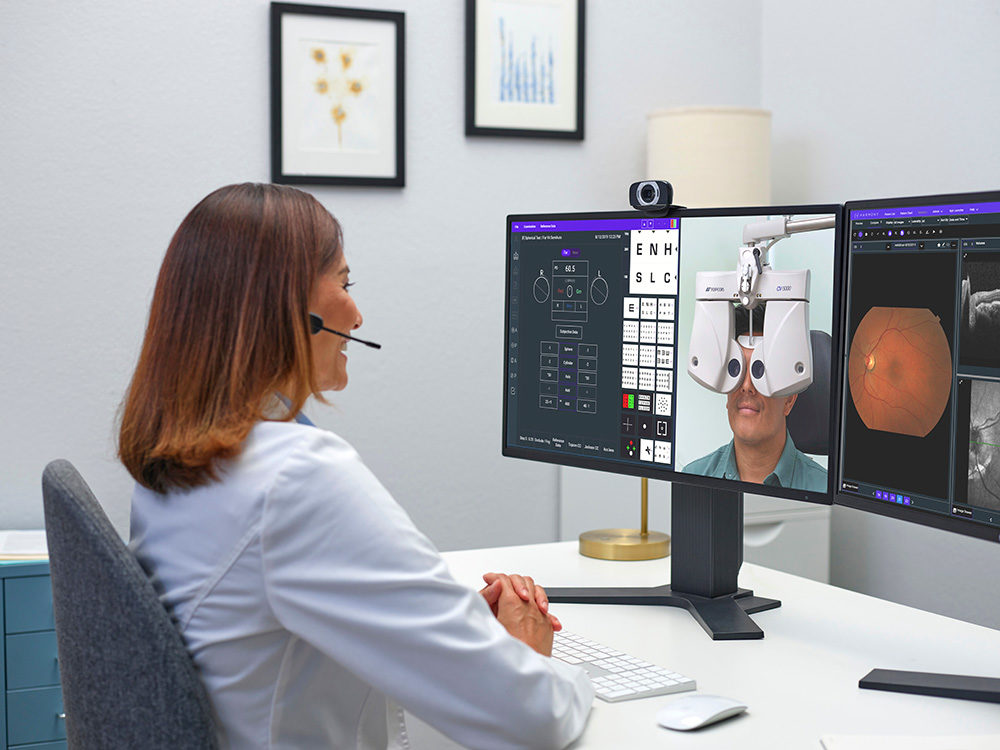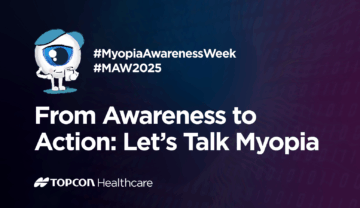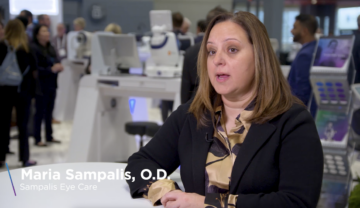
Evolving Refraction Capabilities
Even before COVID was an issue, our New York City based eye care practice of optometrists and ophthalmologists had been doing an increasing amount of virtual work. This has been the case for many of us in eye care; we have been outsourcing our billing operations, front desk services, human resources, and a variety of administrative and clerical functions for many years.
At the same time, the introduction of electronic medical records (EMRs) has increased the level of medical device integration and the exchange of clinical information across the spectrum of eye care. For example, image management software has made it possible for us to view fundus and OCT images, in addition to findings from corneal topography, biometry, ultrasound, and other digital devices between our offices and networks.
In the clinical realm, while medical specialties such as radiology, pathology and behavioral health have been conducting some form of telemedicine for years, other areas of medicine such as optometry and ophthalmology requiring a close-up view of the patient, have had a slower time making the same leap. A few areas of eye care have successfully used telemedicine to some degree to monitor patients with, or at risk of retinal pathologies such as diabetic retinopathy or age-related macular degeneration. However, eye care in general has not utilized remote capabilities to perform portions of the comprehensive eye examination or conduct diagnostic evaluations and tests.
That is all changing with the introduction of new software technology enabling clinicians to perform remote diagnostics, refractions and eye examinations without being physically in front of the patient.
Advancing Refraction Capabilities
There has been an evolution of refraction technology over the years, from conventional subjective refraction to computerized or digital phoropters and now remote operation.
In December 2020, Topcon Healthcare (Tokyo, Japan) introduced Topcon RDx®, an ocular telehealth platform enabling eye care providers to remotely connect to their offices to conduct portions of the comprehensive eye exam. RDx integrates with Topcon’s CV-5000S digital phoropter so practitioners can virtually perform refractions, view supplementary diagnostic information through Topcon’s Harmony data management software, and video consult with the patient in real time.
This new capability offers the patient and provider more exam flexibility, efficiency and an increased level of safety. The doctor and patient are able to virtually meet for the patient’s eye exam, which helps to ensure the patient is presented with timely, high quality eye care while reducing the number of people xnd touch points encountered during an exam. Imagine how much more comfortable the patient might feel in a room with just one technician, while the person performing the exam is in a different location.
From a practice standpoint, this technology has transformed our busy urban clinics. Our remote optometrists are able to quickly move from patient to patient, serving patients in both of our office locations from essentially anywhere.

ABOUT THE AUTHOR
Jay Wisnicki, MD, FAAO, FACS, FAAP, FNYAM is a world-renowned strabismus surgeon. He is the former Chairman of the Beth Israel Ophthalmology Department, but still serves as a clinical professor of Ophthalmology & Pediatrics at Mt. Sinai.

Topcon RDx® and the CV-5000S Digital Phoropter Benefits the Patient and the Practice
Topcon RDx®, an ocular telehealth platform enables eye care providers to connect to their offices remotely and conduct portions of the comprehensive eye exam. Topcon’s CV-5000S automated phoropter integrates with RDx remotely, so practitioners can perform refractions from anywhere.



